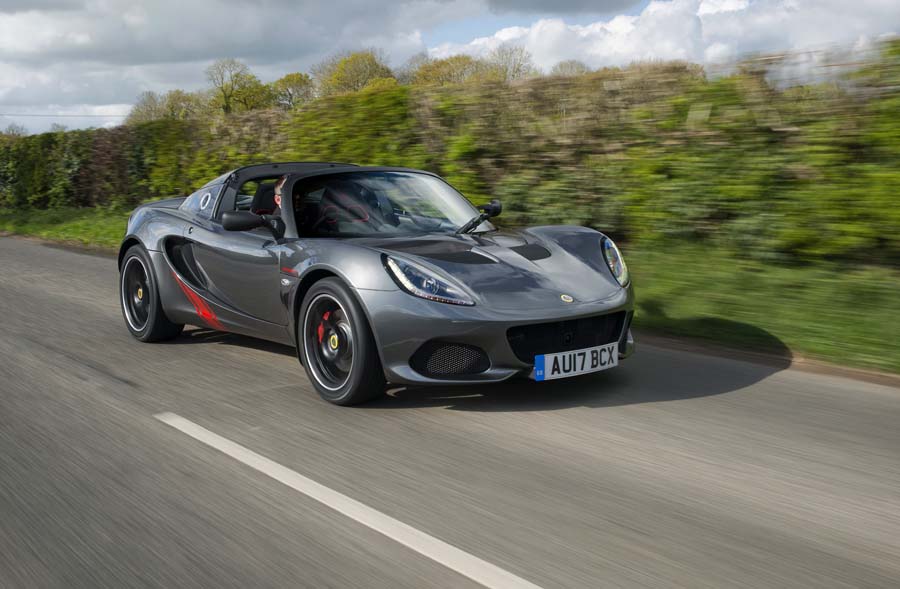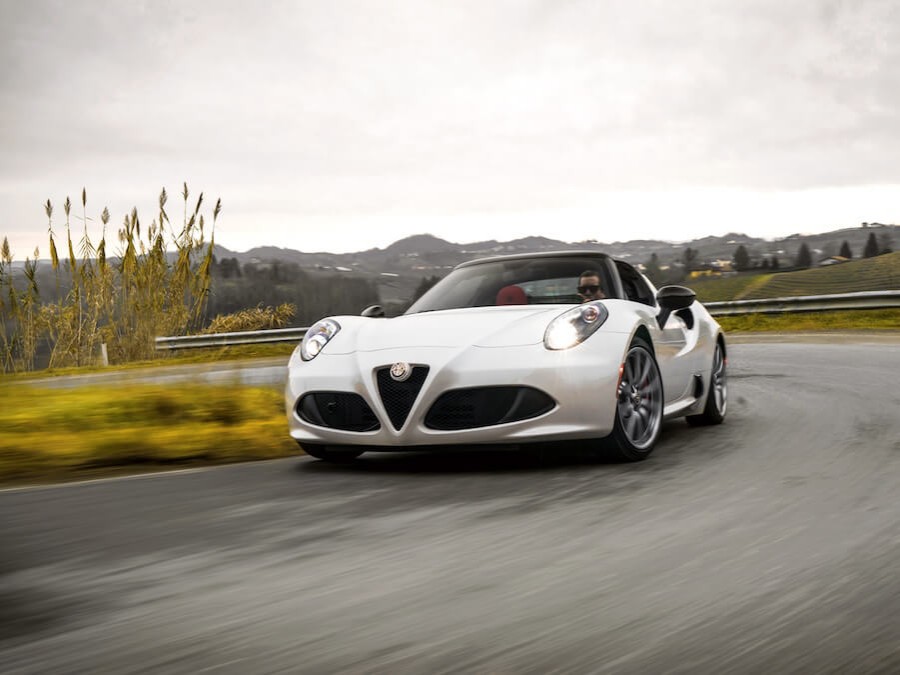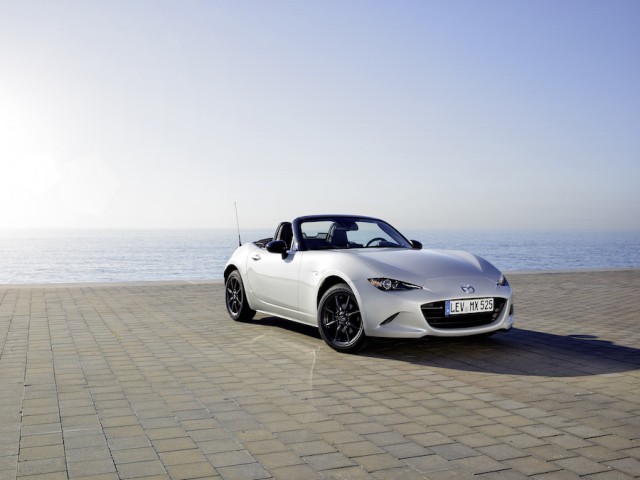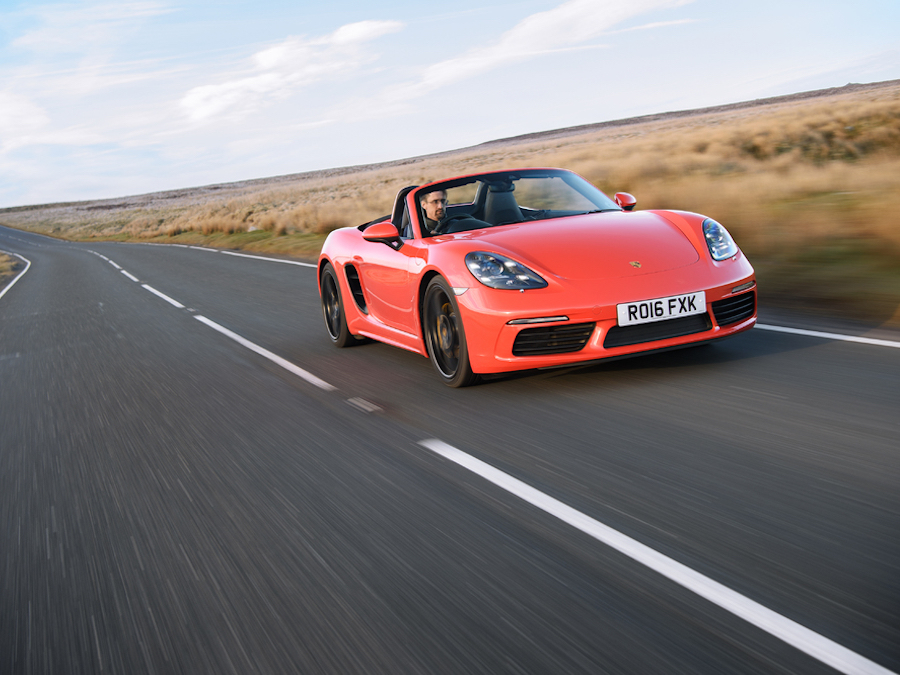Lotus goes over the Elise roadster in a thorough fashion one more time, stripping weight out of the regular two models and giving them the title 'Sport'... and then stripping even more weight out of each to create the lightest production Elises (well, Lotuses, actually) since the original 'S1' of 1996. Say hello to the Elise Sprint 220, which is about as close to driving perfection as you will get from a modern sports car.
In the metal
Let's immediately head off at the pass the inevitable query winging its way towards us, which is: "How much longer can Lotus go on tweaking and tidying up a 21-year-old car and getting away with it?" Well, there are two responses to that: number one, positively prehistoric its lineage in this guise might be, but the Elise was extraordinarily cutting edge when it arrived in 1996 and it remains a paragon of lightness and dynamic brilliance today, so there is no need to throw out the chassis baby with the car development bathwater; and number two, according to company CEO Jean-Marc Gales, this is the last significant update this version of the Elise will receive. A genuinely all-new car is coming in 2020 and while there might be the occasional little detail change or slightly different model names between now and then, no more physical alterations to this shape of Elise will be forthcoming.
Which means you must take note of the following, as they form the basis of the 2017MY Elise: at the front, the radiator grille and air intakes are all enlarged, giving the car a face that's similar to that of the bigger Exige; the front clamshell is re-profiled too and it's lighter; at the rear, the transom (backside, in less nautical terminology) has been revised, mainly because the Elise has lost two of its previously-quad taillights, saving 500 grams in the process; and the rear diffuser, made of aluminium, now has four fins to clean up the airflow exiting from underneath the car.
Inside, there is one significant alteration that can only be termed a stroke of genius. It saves 1kg, truth be told, but we're not really bothered about that - no, we're more bothered about the sense of true theatre it brings to the Elise's otherwise sparse cabin. And the change of which we speak is the glorious, gorgeous, divine exposed gear linkage set-up, taken from the Exige, for the six-speed manual gearbox. It takes all your self-control when driving the car not to just stare down at the machined aluminium mechanism as it goes through its clickety-clack motions. So mesmerising are these exposed workings that you almost miss the new dials in the instrument cluster, the optional interior colour pack that picks out various details in one of five hues, the additional Alcantara coverings and a Clarion head unit that brings in Bluetooth on the Elise for the first time.
All told, among this lot are 10kg of weight savings compared to a 2016MY Elise, resulting in ever-so-slightly sharper driving characteristics for the Sport (1.6-litre, normally aspirated four-cylinder petrol with 136hp) and 220 Sport (1.8-litre, supercharged four-cylinder petrol with 220hp). But the Sprint twins go even further in the pursuit of less mass. Carbon fibre seats are placed in the cabin, while outside, the same lightweight material forms the front access panel, rollover hoop and engine cover. The lightweight alloys take off another 5kg, there's a lithium-ion battery in the engine bay (saving 9kg) and the rear window is made of polycarbonate. Visually, the Sprint and Sprint 220 (nope, we don't know why it's 220 Sport but Sprint 220, either) have a black transom panel surrounding the rear lights and logo, a set of side stripes, unique badging, the colour pack as standard within and contrast stitching for the leather seats.
Oh, and the black alloys with a spun-metal rim, a feature that is designed to hark back to the iconic model from which this car derives its name: the 1971-1973 Elan Sprint. Lotus hasn't used this legendary badge since then, apart from once on a 40-off version of the Exige in the late 2000s, so the Sprint 220 we're driving here has a very special name for aficionados of the brand.
Driving it
Before we get onto the driving impressions, it should be pointed out that Lotus claims the 136hp Sprint is the lightest production series car (it doesn't class the 2-Eleven, 340R and 3-Eleven in this category) it has built since the S1 Elise. Indeed, it goes further to say that, if it weren't for some necessary items to meet safety legislation that has been introduced in the interim, then spec-for-spec the 2017 Elise Sport would be every bit as light as the 725kg S1 with its 120hp engine. As it is, at 798kg dry weight, it's a sub-800kg car and that's phenomenal. Dry weight here, by the way, is a racing term: it doesn't actually mean without any fluids on board at all, but rather denotes the Elise with every vital lubricant poured into it - barring fuel in the tank and washer fluid in the windscreen's reservoir.
The Sprint 220, though, has a dry weight of 851kg, which might seem relatively disappointing, until you realise its power-to-weight ratio is a remarkable 257hp-per-tonne. And as the up-to-40kg weight savings all come from items that are mounted higher up on the Elise's body, that reduces the centre-of-gravity and the polar moment of inertia, making the car even more agile than ever.
Given the Elise has always been an exceptional sports car anyway, you can imagine what making it sharper does for the Sprint 220's character. Honestly, this thing is utterly, utterly magnificent. With 175-section front and 225-section rear tyres, it's not just that the Lotus has an understeer-free chassis balance, but the narrow front rubber means the company doesn't have to assist its steering at all; not even hydraulically. Thus, what you have here is the absolute best steering on sale right now in the automotive world. It positively screams with feedback and feel from the very first minute you turn the steering wheel just a few degrees off centre and nothing else from any other manufacturer comes close.
That, along with the on-the-floor driving position and intimate cabin, hard-wires you into the mid-engined driving experience in a way that makes for an incredibly immersive machine. Turn-in is crisp, grip levels are extraordinary (even in the streaming wet conditions of our test drive) and the rear axle's influence on the direction of travel is huge, yet completely manageable.
We could bang on at great length about the perfect brake progression and rapier throttle control that, with ideally placed pedals, makes for the best heel 'n' toe in the business. Or the stunning damping, which still pulls off that black magic trick of making the Elise ride like a much bigger, heavier, long-wheelbase car when you're just cruising in it or tootling around town. Or the super-precise, short-throw gearbox that is a wonder to use. But we've eulogised enough as it is, so let's just say: if you genuinely adore driving and you can afford just one car that has to put the biggest possible smile on your face on that deserted, winding back road, then the Lotus Elise Sprint 220 is unsurpassable.
What you get for your money
You don't get a lot; air conditioning, cruise control and Bluetooth, in essence. You also get plenty of impracticality, as - even with the optional carbon fibre interior sills adding 10mm to the door aperture's height to supposedly aid ingress and egress - getting in and out of a Lotus Elise is a painful, inelegant and vaguely comical operation, especially if you're of the larger persuasion like yours truly.
Hood off, it's a much easier process, but with the roof in place, never has the allusion to posting yourself into a car been more apt. Swing one leg in, then try and back into a slot that requires you to be folded in half at the hips, before crashing down into the bucket seat and hauling your other leg up and over the sill without dragging it all along the open door. Getting out is even worse: you either attempt the 'Exiting Hermit Crab' and poke both your arms out at once to use as gruesome leverage with which to drag your body free of the Lotus' shell, or you just heft your torso out and duck 'n' roll to the kerb. Trying to maintain any shred of dignity here is impossible.
Then there's the singular lack of any sort of interior stowage at all, save for a scalloped ledge in the dashboard and a solitary cupholder. Or the thimble of a boot out behind the engine, rated at 117 litres in capacity (actually, not that bad when held up to, say, the much larger Audi R8). Practical and well-equipped, this car most definitely is not. And the Sprint is also more expensive than the Sport model.
So why have we given it four stars? Well, because even taking all this into account, the Elise remains far more liveable-with on a daily basis than anything of the ilk of a Caterham, Ariel Atom or so on, while the section is entitled 'What You Get For Your Money' - and while the Elise Sprint 220 might be wildly difficult to just get in and out of, and it isn't exactly inexpensive or good on fuel or particularly new, it is undeniably brilliant. Therefore, it's a case of 'you get what you pay for: a sublime sports car'. Can't mark the Lotus down for that.
Summary
The Lotus Elise is an old car. It is not cheap to buy, it is hopelessly impractical and sure, there are some great drivers' cars out there that are easier to get into, lavishly appointed and less money and bigger and more practical and all that nonsense... and yes, there are even more intense vehicles like the Ariel Atom and BAC Mono if you're into that sort of thing. But nothing else in the world balances so finely on the razor's edge between an everyday car that drives so exquisitely and something that's just too uncompromising to be used on our roads, better than an Elise. And, 2016 Cup 250 model notwithstanding (there will be a 2017 Cup 250 soon; major drool), the Sprint 220 is the finest Elise we've tried yet. It's absolutely astonishing that a car that's 21 years old can be this exceptional, but it's also absolutely undeniable that this end-of-an-era Lotus Elise Sprint 220 should go down as one of this fine marque's finest ever creations. We're in love.

























